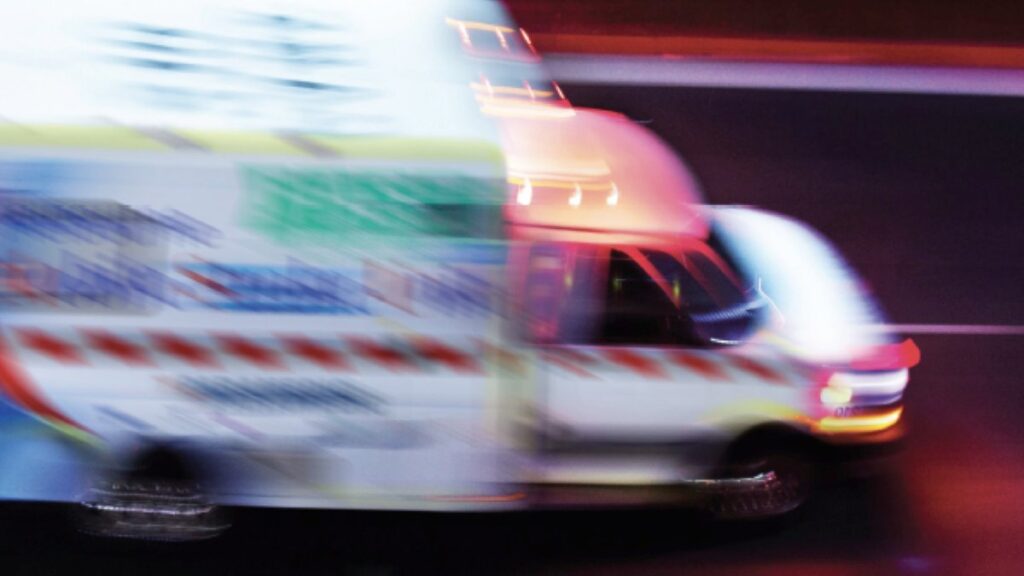Next-generation Mobile Stroke Unit under development
Work is underway to create the next-generation Mobile Stroke Unit (MSU-2) to provide more Australians with rapid access to real-time stroke treatment.

The development of designs for the next-generation stroke ambulance is part of the funding provided by the federal government in the Medical Research Future Fund (MRFF).
The project involves the partners that led the delivery of Australia’s first MSU, The Royal Melbourne Hospital (RMH), the Stroke Foundation, the University of Melbourne and Ambulance Victoria (AV), who now join 30 other health and academic partners.
Together, these partners form the Australian Stroke Alliance, the largest network of its kind, committed to developing cutting edge technologies to provide pre-hospital stroke care to all Australians.
The MSU-2 design plans are part of a co-creation partnership with Siemens Healthineers, and will feature the latest imaging and telehealth technologies to enable the best and most up-to-date prehospital stroke care available.
The original Melbourne MSU, housed at the RMH and the first of its kind in Australia, is an outstanding success. The MSU attended 1035 patients in its first two years of operation, providing treatment at the scene 61 minutes faster compared with patients taken to hospital for treatment.
Co-chair of the Australian Stroke Alliance, Professor Stephen Davis, said the results were extremely impressive, considering every minute counts when it comes to stroke. The new MSU will allow even more accurate diagnosis.
This is an exciting new design and a great step forward in providing the best stroke care for all Australians. This is the world’s first purpose-built scanner for the mobile environment enabling even more accurate and detailed diagnostic brain imaging. With the new MSU-2, stroke patients will have the specialty treatments they need much sooner, minimising risk of disability.
Stroke is a leading cause of disability in Australia. It is estimated that 1.9 million neurons, 14 billion synapses and 12km of myelinated fibres are destroyed each minute of an ischemic stroke.
Alliance co-chair, Professor Geoffrey Donnan, said with stroke being a leading cause of disability in Australia, the possibility of the MSU-2 and other projects (proposed as part of the Medical Research Future Fund Frontier program) means more Australians are likely to recover well from this devastating condition.
“The focus of the MRFF project is in the development, testing and implementation of portable brain imaging tools in air and road ambulances,” Professor Donnan said.
“These projects are all about treating stroke during the ‘golden-hour’ – the crucial first hour of a stroke when patients have a greater chance of avoiding long-term damage.
“With the MSU-2 and other projects, we are able to look at the possibility of treating more patients within that golden-hour, like we have successfully shown with the original Melbourne MSU,” Professor Donnan said.
Ambulance Victoria’s Executive Director of Clinical Operations, Mick Stephenson said the Mobile Stroke Unit makes a big difference to patient outcomes and quality of life.
“We’re able to start working on a patient immediately by providing specialist care which means we’re reducing the time waiting for hospital treatment,” Associate Professor Stephenson said.
Providing Victorians the right care at the right time, no matter where they live, is at the heart of everything we do. The MSU is a key component of Victoria’s world-class integrated stroke network and we are excited to be partnering in its further development.
Medical technology company, Siemens Healthineers is partnering with the Australian Stroke Alliance to develop and design the next generation MSU.
“Siemens Healthineers are privileged and excited to be working with the Australian Stroke Alliance in the transformation of stroke care delivery,” said Philipp Fischer, Head of Computed Tomography. “Our collective aim is to enhance clinical outcomes, and cost effectiveness of MSU services for healthcare providers across Australia.”
Media liaison:
Australian Stroke Alliance:
Amanda Place on +61 411 204 526 or aplace@unimelb.edu.au
Royal Melbourne Hospital:
Rose Houghton on +61 431 481 588 or rose.houghton@mh.org.au
Siemens Healthineers:
Sam Gallagher on sam.gallagher@siemens-healthineers.com